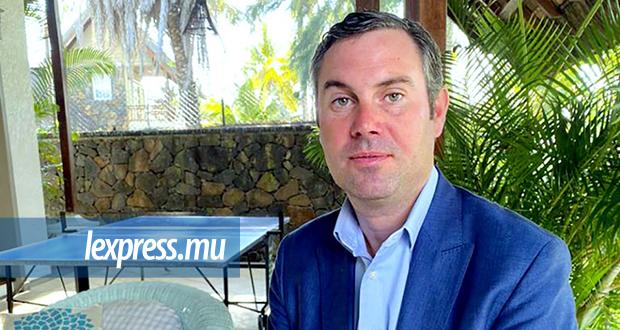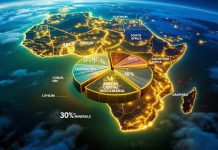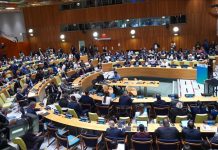
Africa-Press – Mauritius. I am a family man who is passionate about culture, social change and trying to create a smile on the faces of people who are involved with anything that I do.
I own and run an art business in the UK and I am lucky that the Royal Family have bestowed on me personally, as well as my company, a Royal Warrant of Appointment, for dealings with them within the art world over the past decade.
Can you tell us more about your grandmother and her vision to develop the Senneville/Rivière-des-Anguilles region. . . My grandmother was Patsy Rountree, who was a great Mauritian artist and the owner of Bel Air Sugar Estate near Rivière-des-Anguilles that included Senneville.
Her brother was a famous artist called Frank Avray Wilson who, after he left Mauritius and sold the estate Benares, was the first artist to bring abstract expressionist art to Britain. Patsy had a passion for helping people, and especially people who were less fortunate than herself.
I always remember from an early age whenever I visited my grandmother that people around her would say how generous she was, and how she was always trying to find ways of improving local environs, whether by helping to build a school, or by gifting land for religious centres to be built, and other such projects.
Your dad, who recently passed away, was a respected judge in the UK. What was his vision and goals with regard to the land he inherited from his parents?
My father was based in the UK for most of his life after he left Mauritius to go to Cambridge University. He concentrated on being a barrister and was then ‘called,’ as it is known, to become a Judge, which was his focus and took up a lot of time.
Only once he retired did he decide to come back to Mauritius to live, but sadly a few years into that he became ill and had to return to the UK for care.
He was not able to put his personal stamp on Senneville in this time, other than to formulate the area that we currently have for the farm. I buried his ashes in Phoenix-Vacoas cemetery last week, which was his final wish.
And now you’ve taken the lead to manage the family estate and you have a partnership with Pascal Tsin, CEO of Super U. Why did you strike this partnership? What’s in the making?
Pascal Tsin, in my opinion, represents what could be the future of Mauritius. He is a brilliant businessman, understanding the needs of an area and integrating with existing structures to create growth for all concerned. He has incredible vision especially in the area of environmental sustainability for his businesses in the long term.
His strategies are eco-friendly and the focus is on selfsustained energy efficiency, whether it be by utilising a solar farm on the roof of Super U buildings, or by converting organic waste from the supermarkets into compost, that can be used to help grow future crops.
This thinking is surely the future for big business in Mauritius and will help to build a better environment for people to thrive in. . . and the South is the least developed region in Mauritius.
Do you think that your development project can uplift this part of Mauritius? Pascal and I hope to the area of Rivière-des-Anguilles and perhaps also the whole of the South of the Island.
The first step is for a Super U to be built on Senneville land, near to the village – and following that we plan to develop areas around it to create a place that people will be delighted to live in.
Amenities will be close by, health clinic, gym, cinema, restaurants, shops, and of course a supermarket – hopefully with very fresh local produce from Senneville farm and with a very small carbon footprint. The focus will be on three distinct realms: social, commercial and environmental.
These three strands can be tied together to form somewhere beautiful to live and work, as well as functional, with the idea being that you walk everywhere to complete all the aspects / chores in the day that are needed.
The farm is a part of this philosophy, and I am working with Henriette Lagesse of the firm Valentin Lagesse architects, to formulate a new type of farm in Mauritius based around the agrihood ideas that have very recently emerged in America.
This is inspired by a growing understanding that development around, and centred on, farms can produce multiple benefits for individuals and communities while of course enhancing real estate potential.
The idea is to bring consumers closer to us as the growers and the producers of food, integrating them in the experience of food production and indeed positioning the farm as a social hub for the wider community, with events and on-site programs.
We believe that the Super U and surrounding developments will become a ‘destination’ in Mauritius for people to come for the day, and hopefully for many more to come and live.
With the beauty of the surroundings, vegetation, the proximity of the sea, the good air, and generally the ethos, which will be imbued into the building and planning, should help to create a smile on the faces of all who visit and live there !
Can you talk a bit about the importance of clean energies (including wave energy) and solid waste management for a small island state like Mauritius.
We are researching further into wave energy in the South off the coast of Senneville and have been in contact (prior to the pandemic) with an Australian company based in Perth that specialises in this.
Unfortunately, I have not been able to follow up recently due to the pandemic, but in the coming years we should know better exactly how it might work, and whether it is feasible.
I very much feel that projects like this will be a part of the overall strategy of the developments, and should help to make the whole project self-sufficient for energy.
We would like to create a blueprint on the island for sustainable living, that could then be recreated elsewhere. The Rountree family farm has always tried to integrate, as much as possible, the local people.
Will the same spirit prevail with the new development project. . . Hopefully, as I have answered above, we are trying to create a wonderful environment to live and work, with new employment opportunities as well as more amenities for residents.
The residents are the life-blood of any location, and we must ensure that they enjoy living in the area and involve them in creating a fantastic place to visit.
This will in turn encourage other entrepreneurs to create businesses in the region, which will in turn create more jobs and wealth in an upward cycle. Will you open an art gallery in Mauritius? I have always wanted to open a National Gallery of Art in Mauritius – obviously based in the South.
There have been some incredibly important artists that have visited and been greatly influenced by Mauritius from the 1700s through to the present day.
A recent painting I saw in London was by William Hodges, who famously travelled with Captain Cook around the world. Hodges came to Mauritius in 1785, and painted a lovely view of Port-Louis from the sea.
To view these types of works (including those in the MCB collection at the Blue Penny Museum) within one large bespoke building specifically designed around artworks and sculptures would be amazing. What an inspirational place that would be to spend a rainy afternoon.
For More News And Analysis About Mauritius Follow Africa-Press






